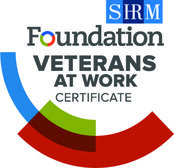The Power of Digital Events For GovCons
Editor’s Note: This Article Has Been Updated April 12, 2023
Are you Zoomed or webinar-ed out yet?
Many GovCon employees are feeling the Zoom-Gloom as it’s often referred to and for good reason. While there’s a new webinar opportunity (or several) every week, it may feel overwhelming to know which to attend and which to avoid.
Digital Event Attendance for GovCon Employees
To keep the Zoom-Gloom, and mind-numbing doldrums at bay, we have a few suggestions on how to schedule your digital event attendance.
- Only plan to attend one digital event per day and no more than 2-3 per week.
We get it, you’re looking for opportunities to see and hear people other than those in your home but attending too many digital events in one week is going to burn you out and tank your productivity. - Get on the ideal mailing lists!
In your industry, you already know your top 5 companies from which you consume content. Make sure you’re in-the-know when it comes to new releases, opportunities, and digital events by signing up for their e-newsletters. If they don’t have one, or if you prefer to keep it out of your inbox, follow them on their social profiles. Most businesses in our industry are using LinkedIn, Twitter, and possibly Facebook in addition to their email outreach or website blog. - Change the landscape for what to expect.
BOOST and govmates have definitely led the charge here when it comes to changing the way the government does digital. From virtual matchmaking opportunities to institutes, and digital expert panel discussions we do our best to make sure that you’re not attending yet another Zoom meeting. You can be informative and have a personality, digitally. Trust us, we’ve tried it. - Register Ahead of Time
If the topic is of interest to you but you’re not sure you can 100% commit register anyway. Typically, you’ll get a calendar invite and a reminder the day before and many times (unless there are certification credits involved), there will be an opportunity for a replay. Billable work comes, and goes, at a whim these days in the form of calls, online meetings, and coffee chats. If you’re able to hop on last minute you may miss out if you haven’t registered in advance. Worst case, you miss the live interaction but you can catch up on the replay later.
Digital Event Hosting Suggestions for GovCons
Now that we’ve discussed attending events, we need to touch on hosting events.
(As a slight side elbow to those of you reading, BOOST will continue to participate in and host virtual learning and webinar opportunities, so keep an eye on your email.)
If you’re planning on hosting a digital event for your government contracting organization (which we do suggest if you’re looking toward growth), here are some things to consider:
- Choose a moderator.
Having someone to keep speakers on track, pay attention to the chat and questions, as well as facilitate the slides is going to go a long way in the smooth transition of the event overall. - Plan to partner with other GovCons.
Two heads, or two communities, are better than one. Including partners and business friends in the planning of your digital events will allow for spirited discussions and a difference in opinions. This provides a healthy variety of content and feels more like a conversation than a presentation (and we know how much we all dreaded college lecture sessions). - Market, Market, Market your GovCon.
Once you plan your event, start marketing your GovCon event right away. Send email invitations to your list as a whole as well as from your leadership to those key individuals in your community that you’d like to attend. Share the registration link on your social media regularly leading up to the event and tag your speakers/partners/moderators as well to increase visibility. Finally, be sure to send a reminder email 24 hours and potentially 1 hour before the start of your event and make sure to follow up with a survey and/or replay link to encourage your position as a resource to your audience.
We highly recommend our slate of digital events and invite you to take part in our upcoming opportunities as the federal year continues (you can request updates to our digital events here). If you’re thinking of hosting a digital event of your own and don’t know where to start, BOOST now offers done-for-you webinar hosting and facilitation! Connect with our Director of Marketing for more information here.





